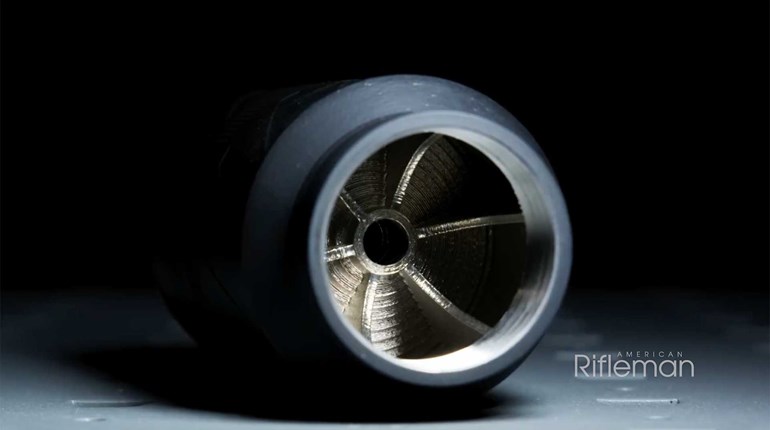
The 6.8 SPC cartridge was developed due to troubling reports about failures of the 5.56 NATO cartridge to incapacitate enemy soldiers. During a development project led by a soldier of the 5th Special Forces Group and a member of the Army Marksmanship Unit, the goal was to create an enhanced rifle cartridge that was compatible with the M4 carbine—AR15—with minimal changes to the weapon.
This started with the 6 mm PPC, which ironically is essentially the same cartridge as the recently released 6 mm ARC, but the project engineers necked it up to 6.5 mm. For some more irony, this is what is known today as the 6.5 Grendel. Due to the poor magazine capacity of this fatter case, it was discarded, and they went to work with the smaller diameter .30 Remington case. Ultimately what would emerge was the 6.8 (.277-caliber) SPC (Special Purpose Cartridge) which was submitted to SAAMI by Remington shortly after the turn of the century.
Since its introduction there has been an ongoing argument as to whether the 6.8 SPC is a better combat or fighting cartridge than the 5.56 NATO/.223 Remington. It would appear the verdict is still out. Though used to some limited extent by military units, the 6.8 SPC never achieved widespread adoption by the U.S. military; the 5.56 NATO is still the primary chambering for individual military weapons. Given the press and publicity of the 6.8 SPC, civilians looking for a home/self-defense carbine now question which cartridge they should trust their life to.

Given the application of home/self-defense, the answer is very likely—from a practical standpoint—unimportant; either cartridge should do a fine job of sorting out any problems you could reasonably expect to face in a home or self-defense situation. The answer of which cartridge is “best” for the job is really irrelevant. A more important question would be, what ammunition should be used for either in a home or self-defense setting.
The considerations here are practically endless with regard to the 5.56 NATO, which can also safely and effectively fire .223 Remington ammunition; MidwayUSA lists more than 150 loadings that will work in an MSR chambered for the 5.56 NATO. As for the 6.8 SPC, they only list 14. Not only does ammunition selection matter, availability is also something to think about. As far as centerfire rifle cartridges go, .223 Remington is one of the best-selling cartridges. Every day the world is making a lot more .223 Remington ammunition than they are 6.8 SPC.
Another advantage of the 5.56 NATO is capacity. There are 10-, 20-, 30-, and even 40-round AR-15 magazines for the .223 Remington available. Because of the larger diameter cartridge case, with the 6.8 SPC magazine capacity is about 16 percent less. Is this a big deal? Probably not, but there is nothing as bad as running out of ammunition when you really need it. If you’re considering some sort of survival situation where you have to operate on foot, 1 pound of 5.56 NATO ammo equates to 38 rounds; 1 pound of 6.8 SPC ammo equals 28 rounds. That’s a substantial difference.
Keep in mind that the military was considering the terminal effects of FMJ ammunition. Modern defensive loads for the 5.56 NATO/.223 Remington like the 55-, 62-, and 75-grain Speer Gold Dot perform substantially better. Of course, non-FMJ 6.8 SPC ammunition, like the Fusion 90- or 115-grain bonded spitzer, perform very well too.
Given similar modern projectiles, for close quarters terminal performance as it relates to self-defense, the 6.8 SPC is probably the better option. Though arguably, with proper bullet placement, the 5.56 NATO/.223 Remington should work just as well. Where the 5.56 NATO/.223 Remington bests the 6.8 SPC is when other things are considered. Other things like cost of range ammo, versatility of specialized loads, and shooting at extreme distance, specifically with a rifle that has a fast twist barrel.
If all you want is a rifle to help save your life in a situation that could reasonably be expected to happen to an average civilian, then get a 6.8 SPC and buy several cases of practice and defensive ammo. If on the other hand you want a rifle you can use to defend yourself, use to have fun on the range, use to take a carbine training class, use to shoot at long distances, and use to hunt varmints and even deer, (Yes, the .223 Remington is legal for deer hunting in more states than it is not) opt for the 5.56/.223 Remington. It is the most versatile cartridge compatible with the AR-15.
Of course, it should go without stating that given the modularity of the AR-15, you always have the option of having a different upper for each cartridge…just in case you cannot make up your mind.






































